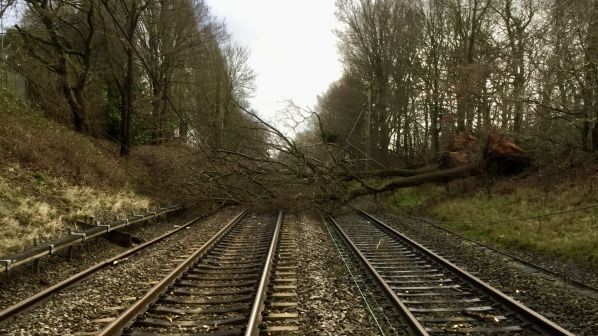Accurate forecasting meant the storm was anticipated, and British infrastructure manager Network Rail plus multiple train operators issued advance warnings to the public to avoid travelling on February 9 as disruption was expected. By that afternoon, a blanket 80km/h speed limit was imposed on exposed lines, including the West Coast and East Coast Main Lines.
Fallen trees blocked rail lines and damaged overhead electrification, leading to disruption on many routes. Flooding caused by heavy rain and high tides in coastal locations added to the problems. 24 hours later many lines had re-opened although the main West Coast Main Line remained closed between Carlisle and Glasgow throughout February 10.
In Germany some services on lines near the North Sea coast were suspended from February 8 in advance of the storm. Most operators suspended services, effectively closing the national rail network from early evening on February 9. Infrastructure manager DB Networks had imposed lower night-time speed limits, having earlier introduced speed restrictions on the lines that remained open. In some parts of eastern Germany there was little or no weather related damage but rail services were still suspended - leading to complaints from passenger groups.
As a result of the weather and disruption most overnight sleeper trains operated by Austrian Federal Railways (ÖBB) in both Austria and Germany were cancelled; two trains were provided as static hotel trains in Vienna and Salzburg for passengers who would otherwise be stranded. On February 10, DB Long Distance was still advising passengers to avoid travelling before February 12 if possible as disruption continued. The operator continued to accept tickets from previous days if passengers had headed the advice not to travel.
Few accidents and injuries were caused by the weather; in Switzerland a
Thurbo operated GTW EMU collided with fallen trees at Wald on the Rapperswil -
Winterthur line in the east of the country early on February 10 damaging the train
and track but not injuring anyone onboard.
The Øresund Bridge connecting Denmark and Sweden was closed due to the
weather from early afternoon on February 9 closing the international road and
rail fixed link between the two countries. Rail services between Denmark and
Germany were also disrupted.

